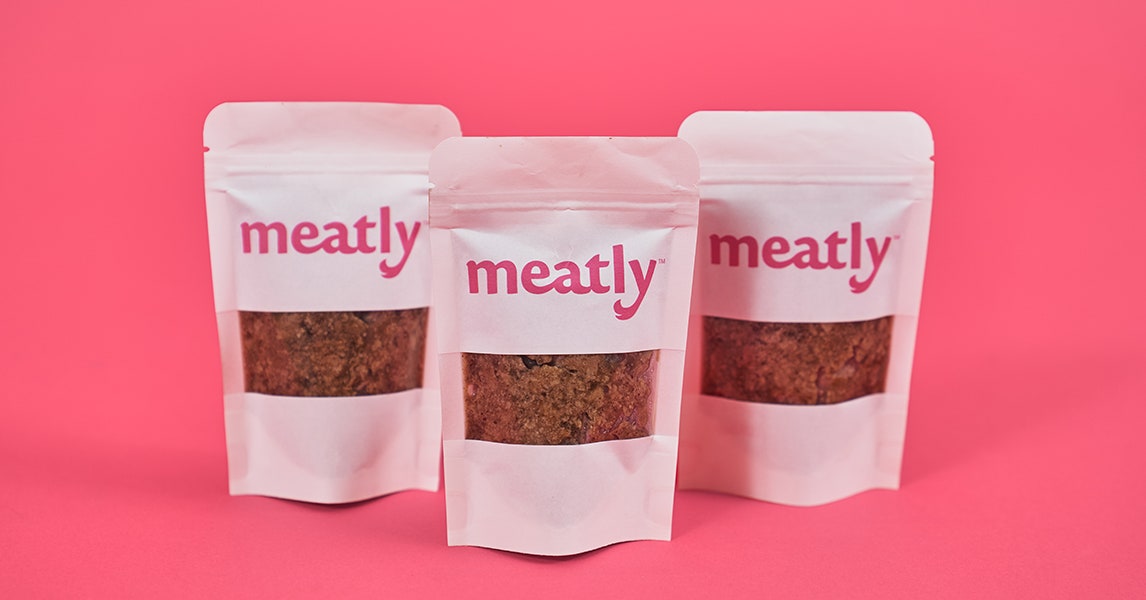In a laboratory in west London, Helder Cruz opens a refrigerator and pulls out a small plastic container. The container contains 280 grams of a whitish paste with the consistency of pâté. These are real chicken cells, taken from a fertilised chicken egg and carefully grown in the bioreactors opposite.
Pasta doesn’t look particularly appetizing, but I’m not the target audience. These cells are intended as a pet food ingredient that doesn’t come from slaughterhouses, and the company that grows them, Meatly, has just received approval from UK regulators to produce its chicken cells for pet food. It’s the first approval of a lab-grown pet food ingredient anywhere in the world.
The approval was granted by the Animal and Plant Health Agency (APHA) on July 2. In the UK, cultured animal cells intended for use in pet food are classified as animal by-products. The approval allows Meatly to sell its chicken cells to pet food manufacturers approved as an ingredient.
“We’ve been very proactive in engaging regulators. We want to be very transparent, we want everyone to be involved in this process,” says Meatly CEO Owen Ensor. He says the startup has already sent some of its chicken cells to pet food manufacturers so they can conduct their own nutritional testing and test different pet food formulas made with Meatly cells as an ingredient.
Ensor says the first pet food containing Meatly cells will be dog food, and could be available on UK shelves before the end of the year, but that bringing products to market is not a big priority for the company at the moment. “What you need to do is reduce costs and increase scale,” he says, “although bringing products to market is useful, so we get feedback from customers.”
The cultured meat industry as a whole is still tiny compared to the trillion-dollar meat industry, and cultured pet food is a niche within a niche with some unique challenges. Producing animal cells in bioreactors remains extremely expensive, largely due to the finely balanced mix of proteins and nutrients that cells need to grow. And since the meat used in pet food is much cheaper than human meat, the cost of cultured meat must be dramatically reduced until it is a viable substitute for pet food.
Meatly is trying to cut costs in a number of ways. Chief Scientific Officer Helder Cruz says any final product could be made up of as little as 4 to 5 percent animal cells mixed with grains and other plant-based ingredients, since most dog foods on the market already mix real meat with a good portion of cheaper fillers. The company is also trying to cut production costs by replacing some of the expensive proteins in the liquid used to grow cells with small molecules from cheaper sources.
The cells found in Meatly’s chicken pate come from commercially available cells derived from a fertilized chicken egg. The cells are spontaneously immortalized, meaning they have the ability to duplicate indefinitely, unlike non-immortalized cells, which stop growing after a certain number of doublings.
“One of our philosophies is to be very focused and work very fast,” Ensor says. That means simplifying production by starting with commercially available cell lines and focusing primarily on chicken rather than trying many different species. “The less we do, the more we can advance toward that goal.”
There are a handful of companies trying to make cultured pet food. Austrian company BioCraft Pet Nutrition is making cultured pet food. mouse meatwhile the Czech firm Bene Meat Technologies It has produced some samples of its cultured meat for pet food, but these startups have raised tiny amounts compared with companies hoping to commercialize cultured meat for humans.
“What’s most impressive is that not only did Meatly receive its first approval, it did so in just two years and with just £3.5 million ($4.55 million)” in investment, says Anthony Chow, co-founder of Agronomics, an early investor in Meatly.
According to Ensor, the finished ingredient currently costs “double figures” in pounds sterling per kilo, but that is before it is mixed with other ingredients in pet food. “It will be a premium product, because prices are still high,” he says.

